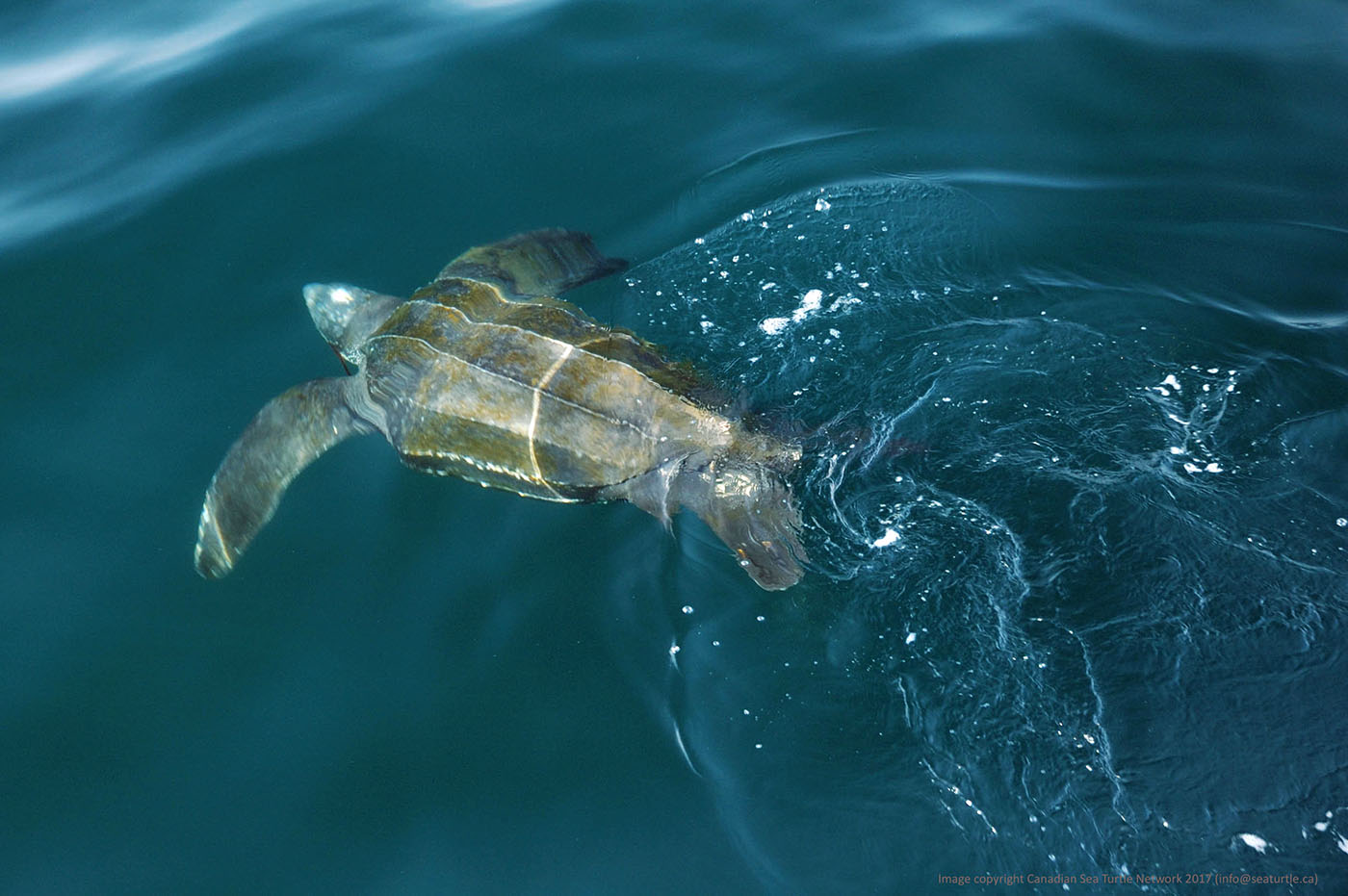Sea turtles
Report a sea turtle disturbance or harassment
Please visit Report a marine mammal or sea turtle incident or sighting.
Learn about sea turtles, conservation and how you can help protect them.
On this page:
About sea turtles
Canadian waters are home to several species of sea turtle, including:
- loggerhead
- Kemp’s ridley
- green sea turtle
- Pacific leatherback
- Atlantic leatherback
They live in a variety of habitats, including:
- deep ocean
- coastal waters
- sandy beaches
These sea turtles migrate to warmer waters in the summer to feed.
Sea turtles have large front flippers that make them strong swimmers and allow them to move along beaches.
Most have a hard shell (carapace), except for the leatherback sea turtle. Leatherbacks have a softer shell made up of small, bony plates covered by a layer of oil-saturated fat and a leathery skin. Unlike freshwater turtles and tortoises, sea turtles can’t pull their limbs and head inside their shell for protection.
Eggs and young
Female turtles return to the same tropical or subtropical beach where they were born to deposit their eggs. They dig nests, lay their eggs and bury them.
After a period of incubation, baby sea turtles hatch from their eggs and quickly leave the nest to make their way to the ocean.
Young turtles spend their first years floating in offshore beds of seaweed that follow large ocean currents.
When turtles are around 22 to 30 centimetres across, they begin to visit coastal feeding areas. It takes about 15 to 20 years for a sea turtle to reach reproductive maturity. We don’t know the exact life expectancy of sea turtles, but some species can live to reach 100 years or older.
Conservation
Sea turtles are of global conservation concern. Several populations are in a state of decline. Sea turtles are threatened by human activities, such as:
- pollution
- poaching
- entanglement
- coastal development
- fisheries bycatch (being caught accidentally when fishing for another species)
In Canada, the species at risk list of endangered sea turtles includes:
- the loggerhead
- both the Pacific and Atlantic leatherback
Publications
- Dealing with Leatherback Turtle Entanglements in Newfoundland and Labrador
- The Leatherback Turtle: an Endangered Species
- Threat Assessment for Loggerhead Sea Turtle (Caretta caretta), Northwest Atlantic Population (CSAS ScR - 2017/014)
- Advice relevant to the identification of critical habitat for Leatherback Sea Turtles (Pacific Population) (CSAS SAR - 2013/075)
- Recovery Potential Assessment for Loggerhead Sea Turtles (Caretta caretta) in Atlantic Canada (CSAS SAR - 2010/042)
- Atlantic Canadian loggerhead turtle conservation action plan
- Advisory documents for sea turtles
- Research documents for sea turtles
Related links
- Date modified:


